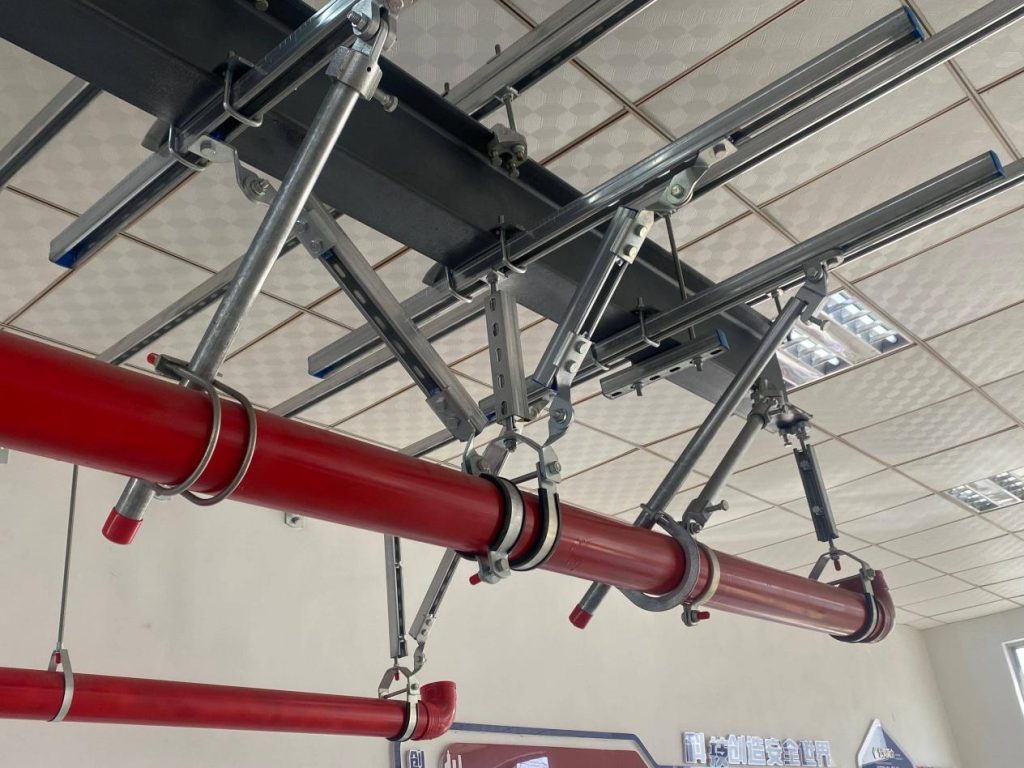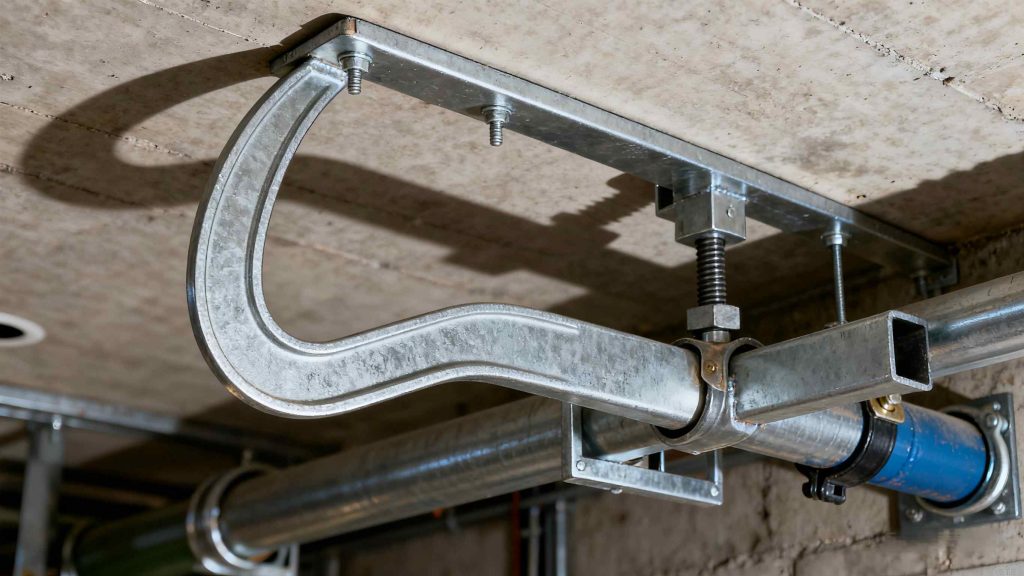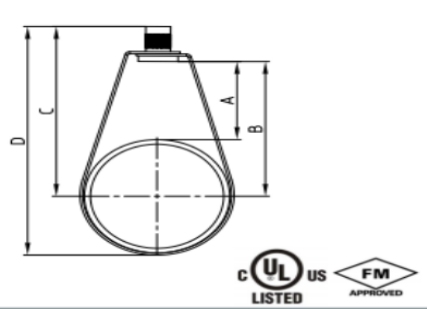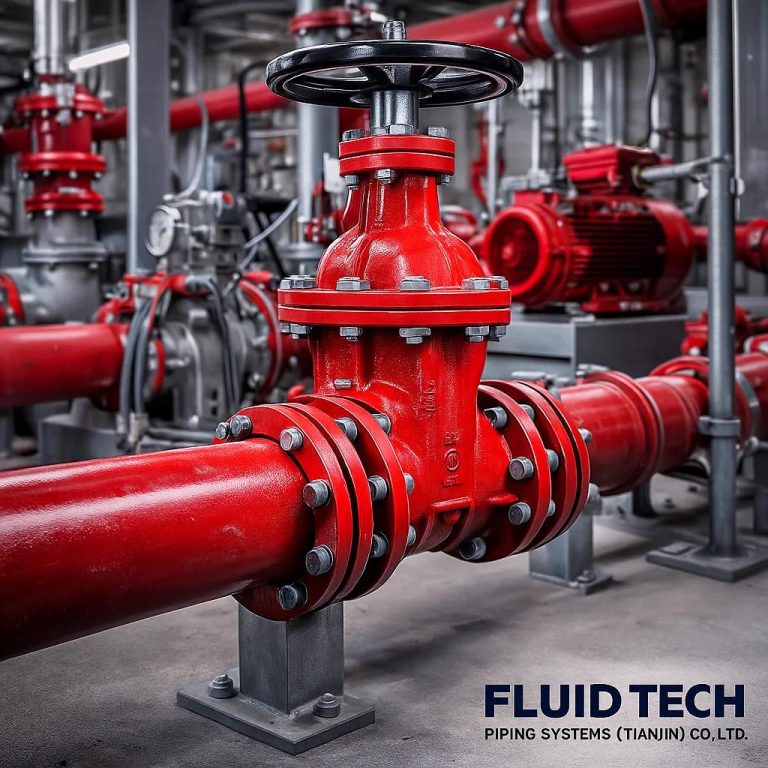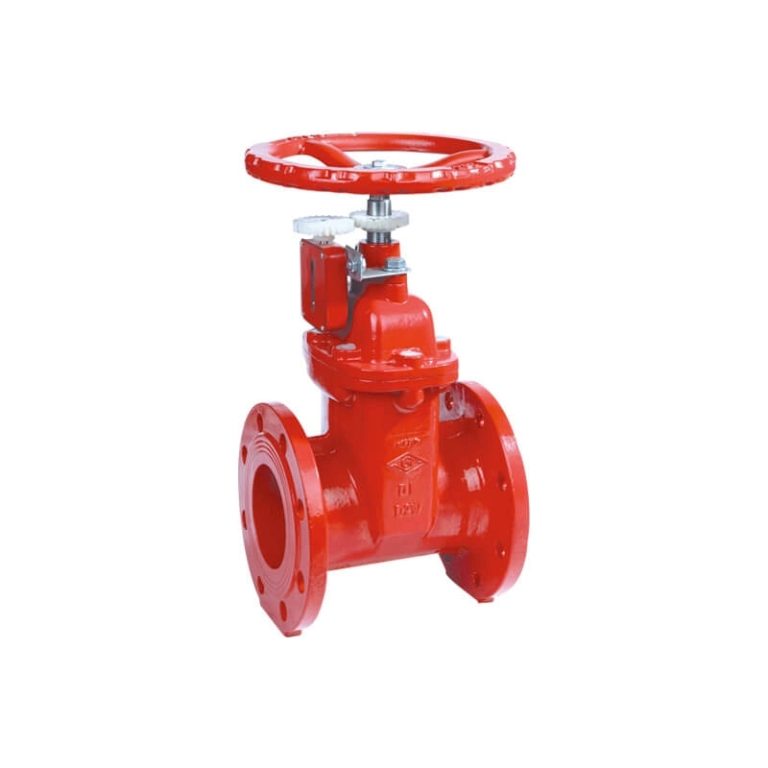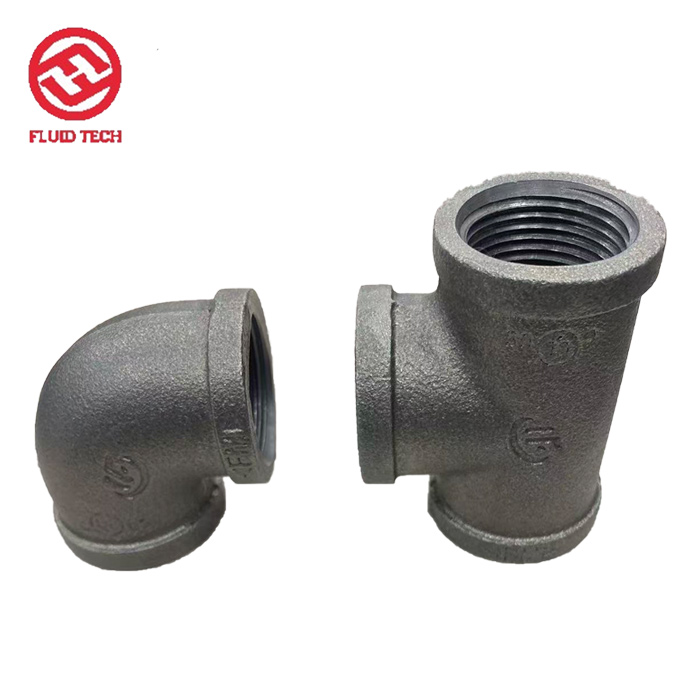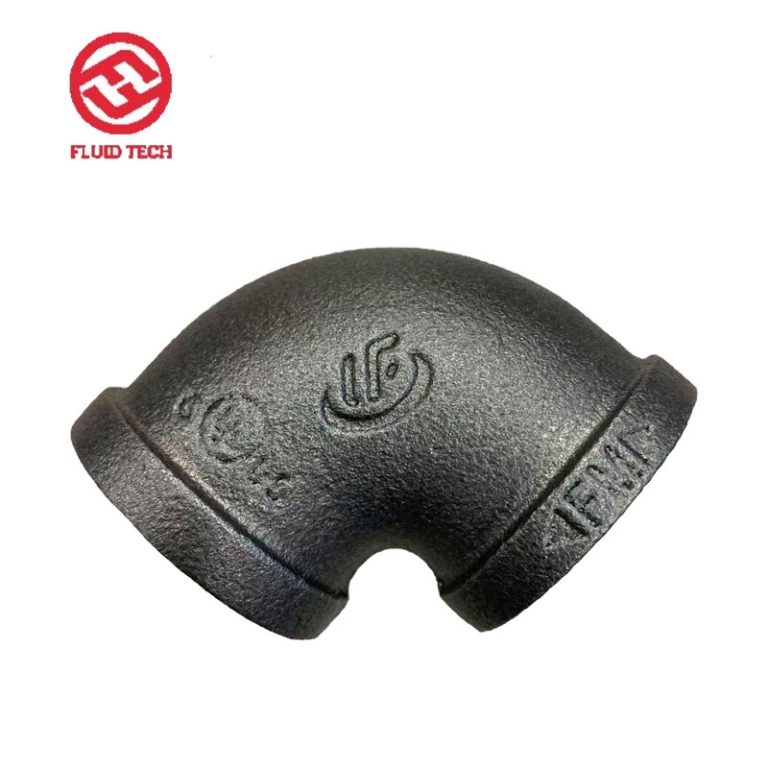In the world of building safety, brandschutzsysteme stand as silent guardians, ready to act when seconds count. Pipes carrying water or other suppressants snake through ceilings and walls, delivering life-saving flows during an emergency. Yet, these lines depend on more than just pumps and valves. The humble pfeifhügel often goes unnoticed, but it plays a pivotal role in keeping everything in place. Choose the wrong one, and a system meant to save could falter under stress—vibration, thermal shifts, or even an earthquake. This piece dives into why selecting the proper pipe hangers matters so much for system reliability. We’ll explore their functions, types, and selection tips, drawing from real-world applications in high-stakes environments.
The Critical Role of Pipe Hangers in Fire Protection
Fire protection setups demand precision from every component. Pipes must stay aligned, free from sags or shifts that could kink lines or delay water delivery. Hangers do more than hold weight; they absorb movements and maintain positioning over time.
Supporting Stability in Everyday Operations
Picture a mid-rise office building in a bustling city. Sprinkler lines run overhead, loaded with water pressure even at rest. A basic hanger might bear the load—say, 300 pounds for a 2-inch pipe—but it has to handle daily vibrations from HVAC units or foot traffic below. In one recent retrofit at a commercial hub, installers found older supports had stretched, causing minor leaks during routine tests. Switching to robust hangers cut those risks, ensuring flows hit nozzles without interruption.
Data backs this up. Industry standards call for hangers to support at least five times the pipe’s filled weight, accounting for water, fittings, and insulation. For a 4-inch steel pipe, that’s often around 600 pounds per hanger. Get it right, and the system passes inspections with flying colors.
Safeguarding Against Dynamic Threats
Fires bring heat—up to 1,000°F in minutes—causing pipes to expand by inches. Without flexible supports, that expansion twists joints, risking bursts. Hangers with slotted designs allow sliding, preventing stress buildup.
Seismic zones add another layer. In areas like California or the Middle East, earthquakes can whip pipes like pendulums. Braced hangers, paired with rigid ones, keep lines from whipping into walls or each other. Take the Red Sea International Airport project in Saudi Arabia: engineers there integrated specialized hangers into the hydrant system, holding steady through simulated shakes that mimicked local fault lines. The result? A setup certified for operation even after a magnitude 7 event.
Essential Types of Pipe Hangers for Fire Safety
Not all hangers fit every job. Fire systems call for options tailored to pipe size, location, and load. Here, we spotlight three staples: ring, clevis, and J-type hangers. Each shines in specific scenarios, backed by rigorous testing.
Ring Hangers: Simple and Versatile for Straight Runs
Ring hangers wrap pipes in a secure loop, ideal for horizontal lines in tight spaces. Made from carbon steel with a galvanized finish, they resist corrosion in humid basements or attics. Their design distributes weight evenly, minimizing point loads that could dent softer pipes like CPVC.
These work well in low-vibration areas, such as warehouse sprinkler mains. A typical 3-inch ring hanger handles up to 420 pounds, with a temperature tolerance of 650°F—plenty for most suppressants. Installers appreciate the quick snap-on feature, cutting setup time on large jobs.
Clevis Hangers: Robust Choices for Heavier Loads
For pipes demanding extra strength, clevis hangers deliver. Picture a U-shaped yoke cradling the pipe, bolted to a rod from above. This setup excels in vertical drops or where side loads from bends apply pressure.
Crafted from electro-galvanized carbon steel, clevis models meet FM and UL listings, ensuring they won’t fail under fire conditions. Specs vary by size: a 6-inch version, for instance, supports 1,059 pounds with M12 bolts, dimensions hitting 181 mm wide and 270 mm long. In the Kingsway Tower in Nigeria, teams used these for fire pipe runs, securing lines against tropical humidity and load shifts. The outcome? Zero failures in pressure tests, even after months of exposure.
Here’s a quick spec overview for common sizes:
| Rohrgröße | Bolt Specs (Upper/Lower) | Width (mm) | Length (mm) | Max Load (lbs/kg) |
| 2″ | M6/M10 | 77.1 | 109.5 | 299/135 |
| 4″ | M10/M16 | 130.75 | 191.5 | 599/270 |
| 6″ | M12/M18 | 181.35 | 270 | 1059/477 |
| 8″ | M16/M22 | 216.95 | 331 | 1619/729 |
J-Type Hangers: Flexible for Tricky Installs
J-type hangers bend to the installer’s needs—literally. Their hook-like arm attaches to walls or beams sideways, perfect for retrofits where overhead access is limited. The T-slot lets you bolt after positioning the pipe, a game-changer in crowded mechanical rooms.
Built for durability, these galvanized steel units rate to 650°F and handle diverse loads. A 4-inch J-type takes 599 pounds, with a compact 156 mm arm length. During the CIU Nicosia hospital build in Cyprus, crews relied on them for seismic-braced lines, threading through existing ducts without downtime. Post-install, vibration tests showed deflections under 1/8 inch—well within codes.
Key specs at a glance:
| Rohrgröße | Bolt Specs | Arm Length (mm) | Max Load (lbs/kg) |
| 1-1/2″ | M6/M10 | 78 | 299/135 |
| 3″ | M10/M10 | 124 | 419/189 |
| 5″ | M10/M10 | 171 | 799/360 |
| 10″ | M10/M16 | 275 | 2339/1053 |
Choosing the Right Hanger: Key Considerations
Picking hangers isn’t guesswork—it’s about matching specs to site demands. Start with load calculations: factor in pipe weight, fluid volume, and insulation. A 2-inch wet steel line might need 300-pound capacity, but add bends, and it climbs.
Material matters too. Galvanized carbon steel wards off rust in damp spots; stainless steps in for coastal builds. Always chase certifications—FM Approved or UL Listed means third-party vetting for fire endurance.
Spacing counts. Codes suggest hangers every 12 feet for rigid pipes, closer for flexible ones. In a data center overhaul, tightening spacing from 15 to 10 feet slashed sway by 40%, per accelerometer readings.
- Environmental Fit: Opt for corrosion-resistant finishes in corrosive air.
- Load Margins: Aim for 1.5 times expected stress to cover surprises.
- Compatibility: Ensure hangers pair with pipe types—steel, CPVC, or copper.
- Ease of Access: Choose adjustable models for future tweaks.
Installation Insights for Long-Term Reliability
Getting hangers up right sets the stage for decades of service. Begin with a survey: map pipe routes, note obstacles, and calculate spans. Use threaded rods anchored to structural steel, not hollow joists.
Torque bolts to spec—overtighten, and you crush pipes; undertighten, and vibrations loosen them. In seismic areas, add sway braces every other hanger, cross-patterned for multi-directional hold.
Maintenance seals the deal. Annual walks check for rust or shifts, especially post-storm. One facility manager in a Midwest factory caught a sagging line early this way, averting a $50,000 repair bill.
Upholding Quality in Pipe Hanger Production
Quality isn’t optional—it’s the backbone of trust. Factories run water pressure tests at 200 psi, mimicking fire surges, while dimension checks hit microns for fit. Third-party audits, like those from SGS, verify every batch.
For Fluid Tech products, this means FM/UL/CE stamps across the board, plus ISO-certified processes. Shipments get pre-load inspections, photos included, so sites receive exactly what’s promised. It’s this rigor that powered supplies for over 100 global projects, from towers to airports.
Discovering Fluid Tech: Your Go-To for Pipe Hangers
Fluid Tech Piping Systems (Tianjin) Co., Ltd., stands out as a dedicated supplier in the fire protection arena. As part of the broader Fluid Tech group—the pioneers in northern China’s grooved fittings scene—they focus on one-stop solutions for worldwide builders. Their pipe hanger lineup, from ring to clevis designs, carries top certifications like FM and UL, built in partner factories audited for ISO and TUV compliance.
What sets them apart? A commitment to practical support: pre-shipment tests, custom sizing, and logistics that trim costs without skimping on safety. Whether outfitting a Nigerian high-rise or a Saudi airfield, Fluid Tech delivers hangers that hold firm, drawing on years of exporting to diverse markets. It’s about more than parts—it’s engineered peace of mind for teams counting on systems to perform.
Wrapping It Up
Pipe hangers might seem like background players, but they anchor the entire fire protection chain. By going beyond mere support—factoring in loads, movements, and environments—the right choices keep systems primed and true. In buildings where lives hang in the balance, that reliability isn’t negotiable. Next time you’re spec’ing a job, pause on the hangers. The difference shows when it matters most.
Frequently Asked Questions
What makes the right pipe hangers go beyond support to ensure fire protection system integrity?
The right pipe hangers manage not just static weight but also thermal expansion, vibrations, and seismic forces. For instance, a clevis hanger’s yoke design absorbs side loads, preventing pipe shifts that could compromise water flow during an outbreak.
How do different types of pipe hangers contribute to overall system reliability?
Each type targets specific needs: ring hangers suit straight, low-vibe runs for even distribution; J-type models ease wall mounts in tight spots; clevis options tackle heavy verticals. Together, they maintain alignment, as seen in projects like airport hydrants holding 1,000+ pounds steady.
Why are certifications crucial when selecting pipe hangers for fire systems?
Certifications like FM and UL confirm hangers endure fire temps up to 650°F and loads with safety margins. Without them, a hanger might fail under stress, risking the whole setup—think of a warehouse test where certified units passed 200 psi blasts unscathed.
Can improper pipe hanger installation affect fire protection performance?
Absolutely. Loose bolts or wrong spacing lead to sags, kinks, or brace failures. In one hospital retrofit, adjusting to code-compliant intervals cut deflection risks by half, ensuring sprinklers activate without delay.
How often should pipe hangers be inspected in a fire protection system?
Routine checks every six to 12 months spot corrosion or loosening, especially in harsh climates. Post-event reviews, like after quakes, verify integrity—simple steps that extend service life and uphold system readiness.

